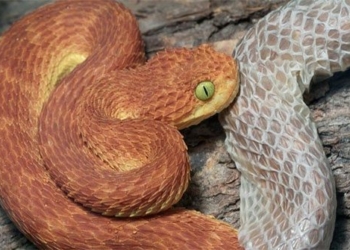Roosters, hens, and chicks roam freely on the island of Kauai, a picturesque island in Hawaii. They can be seen on the beaches, in parking lots, on the roads, and even running through open windows.
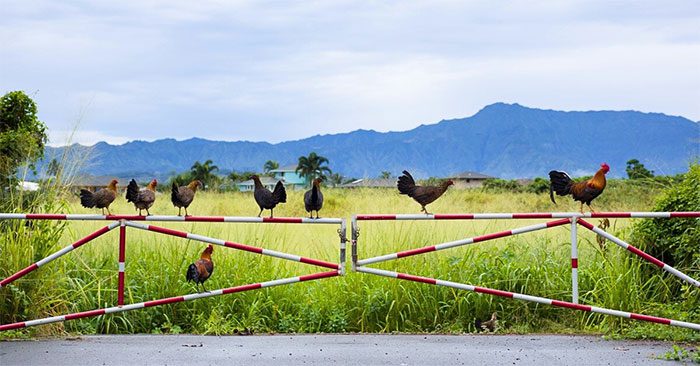
Kauai is the oldest island in the Hawaiian archipelago. Covering an area of 1,456.4 square kilometers, it is the fourth largest island in Hawaii and the 21st largest in the United States. The wild chickens of Kauai have a rich history spanning centuries, with each era contributing to their unique diversity. From the arrival of the Polynesians and the introduction of chickens to the interbreeding brought by European settlers, to the accidental release of poultry into the wild following storms.
Kauai, known for its lush landscapes and pristine beaches, has become famous for its chicken population. These wild chickens have inhabited the fourth largest island in Hawaii for over a thousand years, and their presence has become an integral part of local culture, with souvenir shops filled with chicken-themed memorabilia.
The wild chickens you see on the island today are a mix of ancient breeds brought by Polynesian settlers nearly a millennium ago (similar to the red junglefowl, a relative of Southeast Asia’s domesticated chickens that were tamed around 8,000 years ago) and domesticated breeds introduced by European colonizers. This interbreeding has led to the emergence of new chicken breeds that possess characteristics of both domestic and wild fowls.
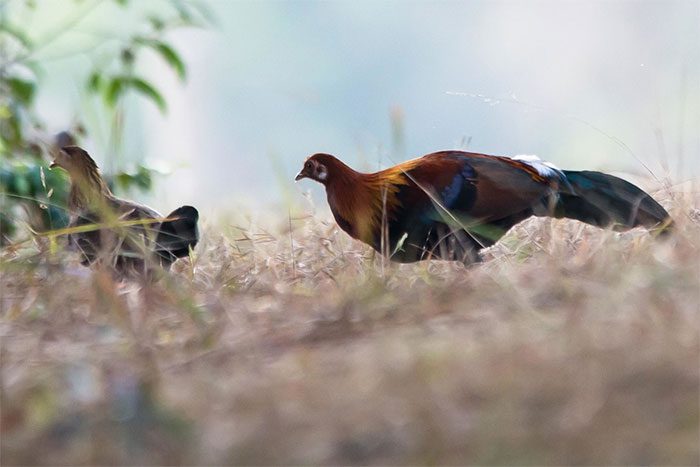
The wild chickens of Kauai are partly descended from the red junglefowl (Gallus gallus), a tropical pheasant species belonging to the Phasianidae family, which is distributed throughout Southeast Asia and parts of South Asia, and was brought to the island by Polynesians 800-1,000 years ago.
However, the population of chickens in Kauai has exploded in recent decades due to several factors. The Iwa hurricane in 1982 and Iniki in 1992 destroyed many backyard coops, releasing chickens into the wild. Additionally, in Hawaii, all wild birds are protected by state law, including wild chickens. With no natural predators to control their numbers, aside from dogs and cats, these chickens have thrived in the island’s favorable environment. Despite being discouraged, tourists continue to feed them, leading to a further increase in their population.
While they may seem harmless, locals warn that these wild chickens can carry various diseases, so it is best to admire them from a distance and refrain from feeding them. As territorial creatures, some individuals can be aggressive, capable of inflicting injuries with their sharp beaks and claws!
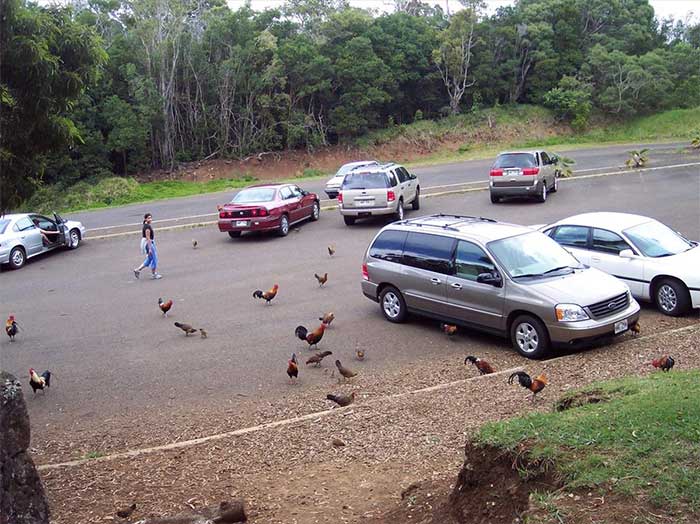
In Hawaii, all bird species, including wild chickens, are considered protected animals, and their meat is tougher than regular chicken, so locals are also reluctant to hunt and eat them.
However, the inconveniences do not stop there. For instance, all roosters crow simultaneously at dawn, which can be quite bothersome during vacations. These wild chickens also complicate the lives of locals as they easily invade gardens and ravage vegetable patches and ornamental plants. Furthermore, the presence of wild chickens impacts the local ecosystem, and most car accidents are caused by them.
So, just how many wild chickens are on this island? It’s challenging to provide an exact number since wild chickens are not monitored or counted, but their population is estimated to be around 450,000, while there are only about 72,000 residents living in Kauai.
Efforts to manage the wild chicken population include fines for feeding them, attempts at controlling poultry reproduction, and trapping, but these measures have only achieved limited success.
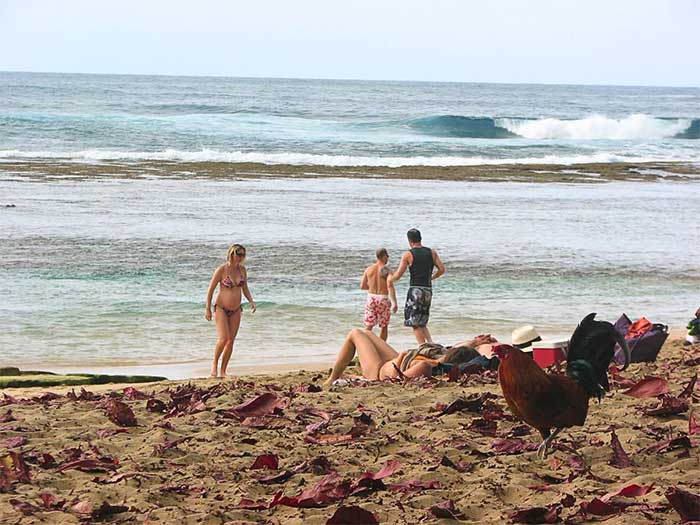
Wild chickens in Kauai have significantly impacted the environment. They eat insects, helping control the centipede population. However, their foraging behavior causes damage to crops and native plants, which can harm local species and biodiversity. Additionally, they can sometimes be a nuisance to humans. They can be noisy, carry pathogens, and cause disturbances.
According to archaeologist Dale Serjeantson from the University of Southampton, rice fields in Southeast Asia played a significant role in the domestication of wild chickens.
In 2020, a genetic analysis of 863 chickens confirmed that the subspecies Gallus gallus spadiceus, also known as the Myanmar junglefowl, is the ancestor of modern chickens; today’s chickens share more DNA with Gallus gallus spadiceus than any other subspecies. Based on the research findings, scientists can assert that the domestication process occurred in Southeast Asia.
As paleobiologist Greger Larson notes, even though chickens were domesticated later than other animals, they are still the most successfully domesticated species on the planet. The number of chickens now outweighs humans by a ratio of 10:1.









































